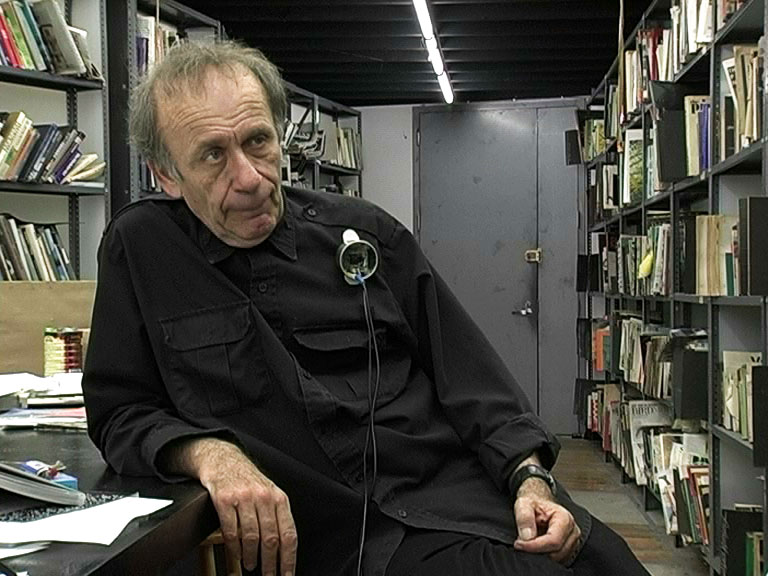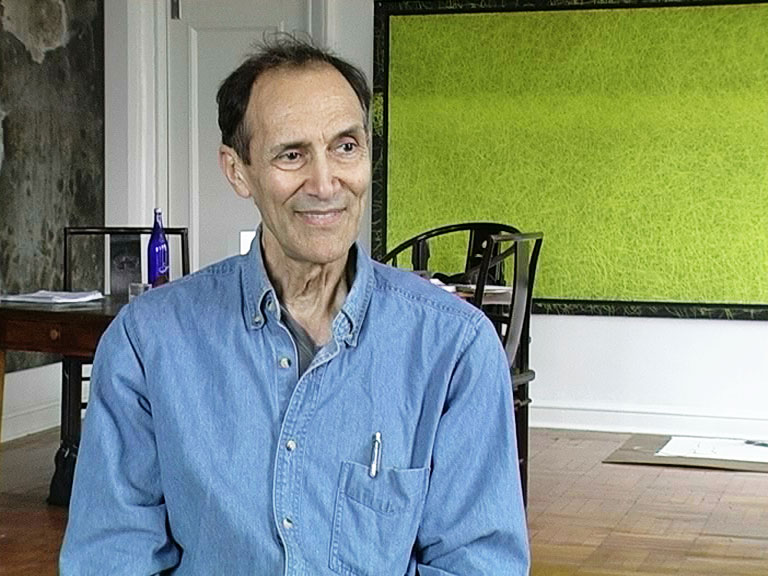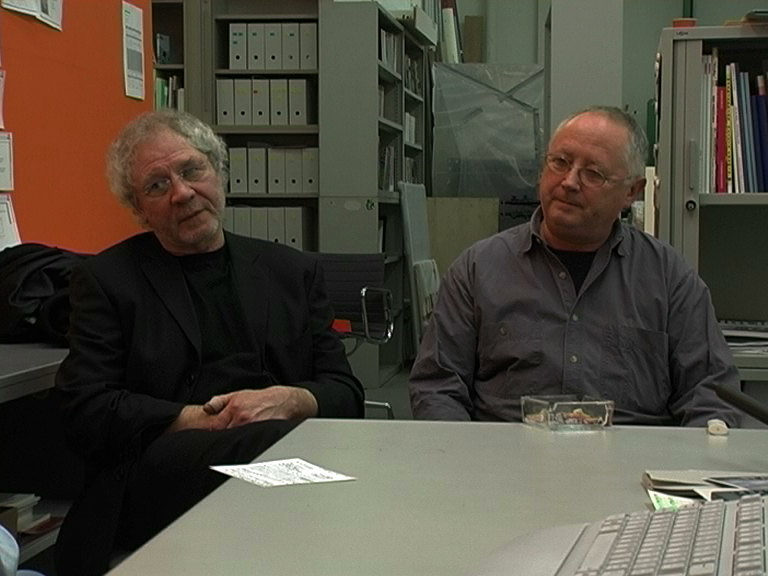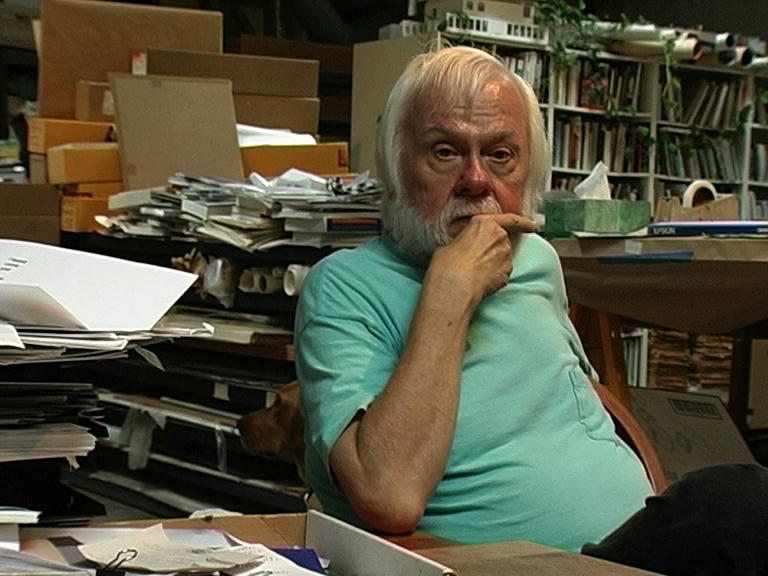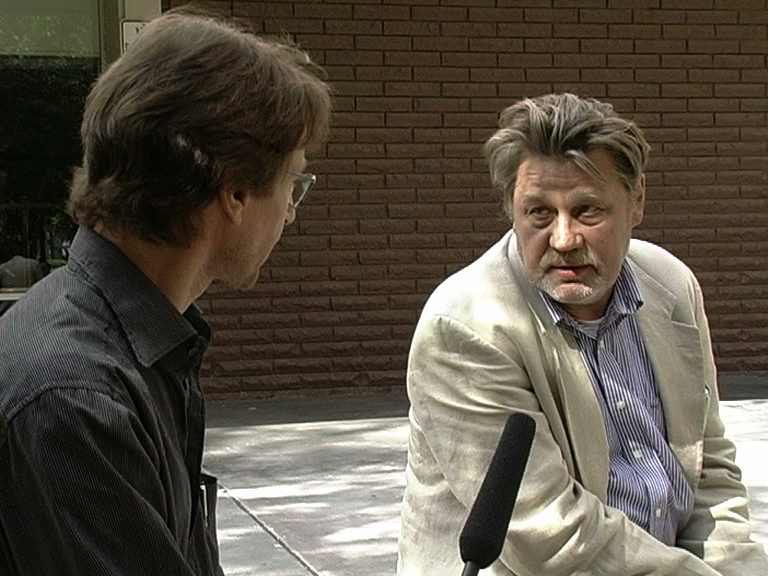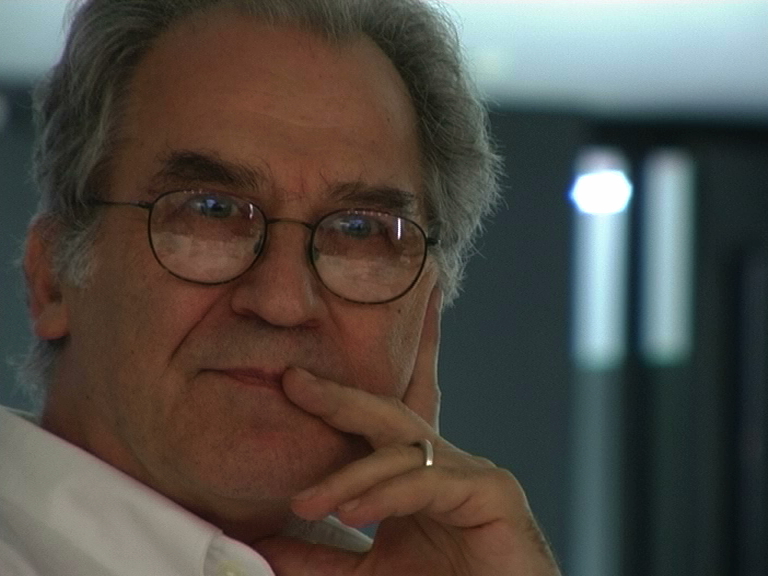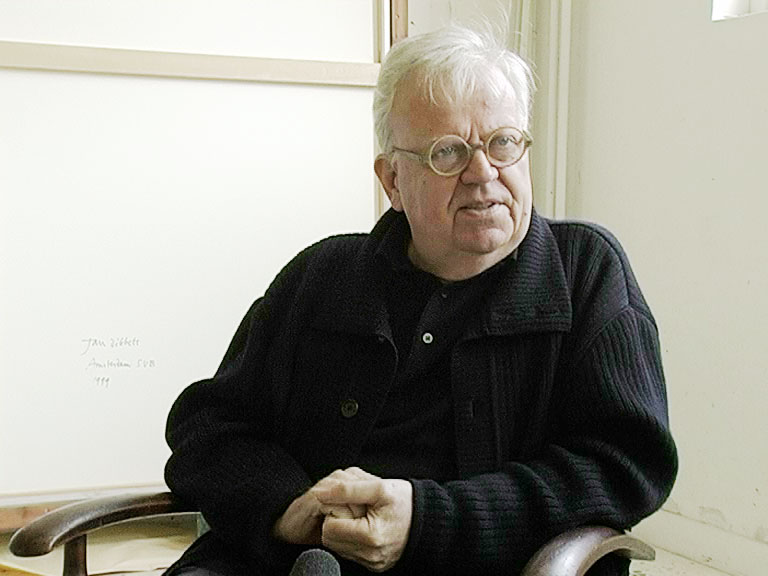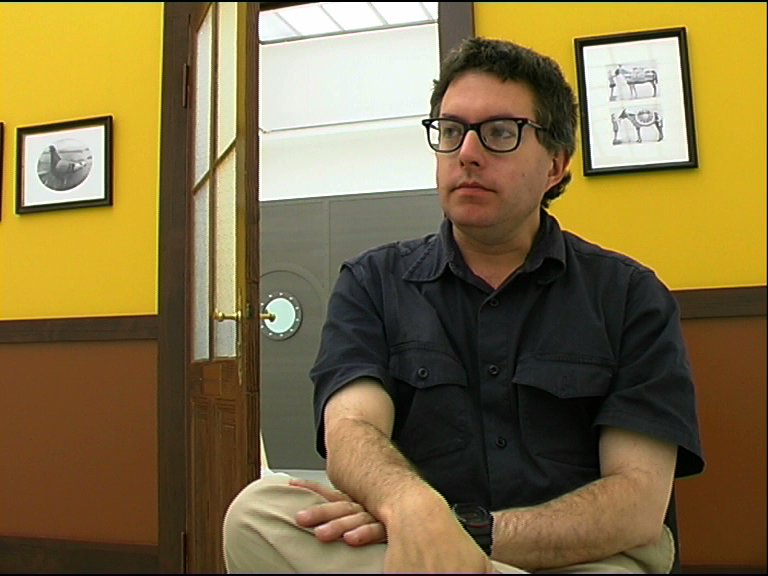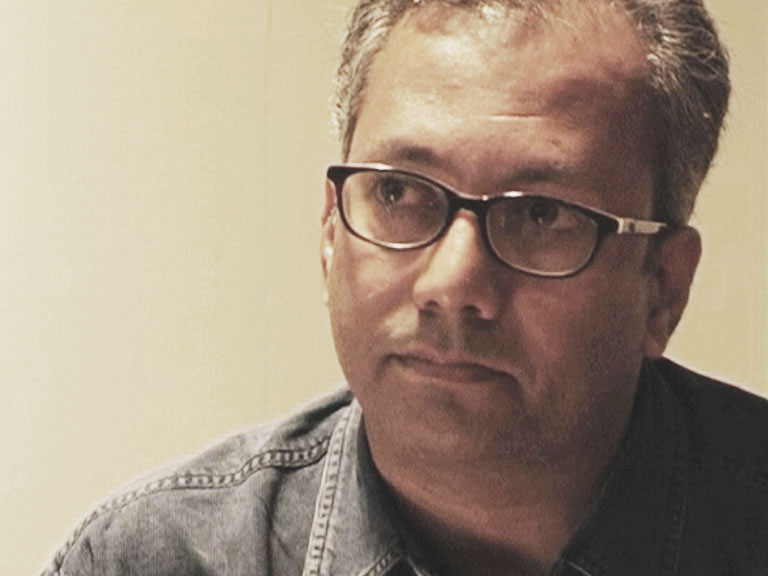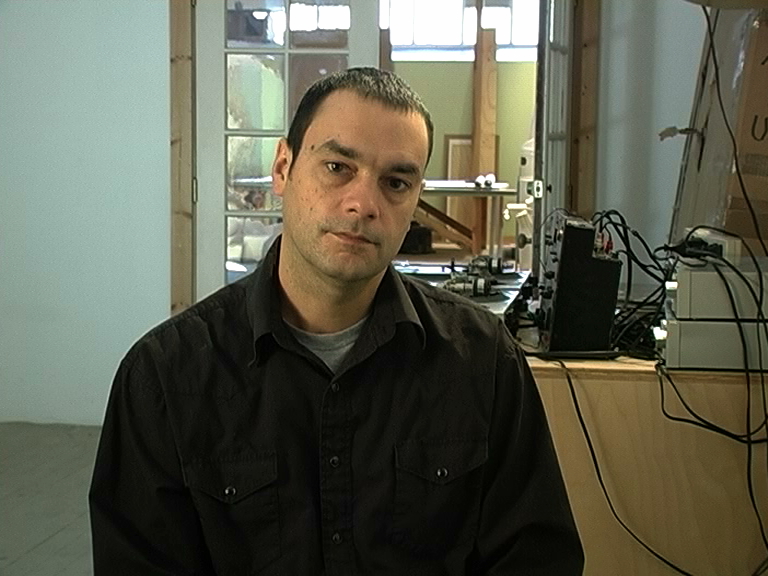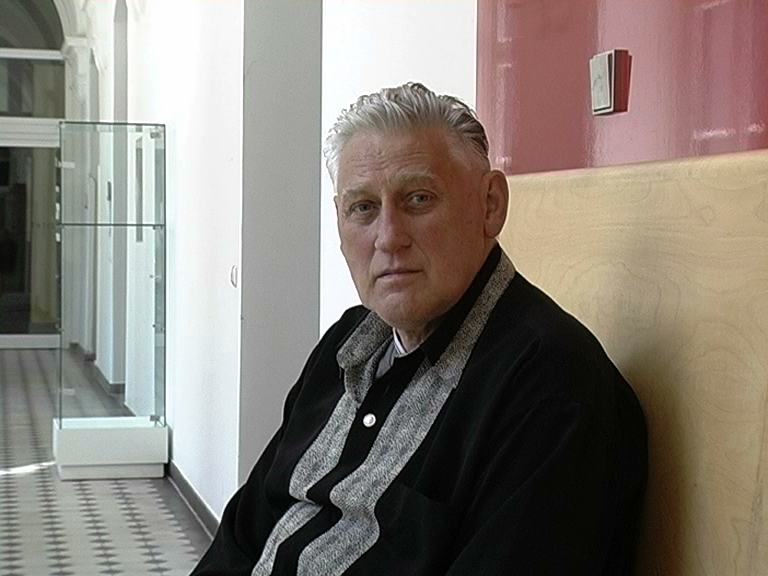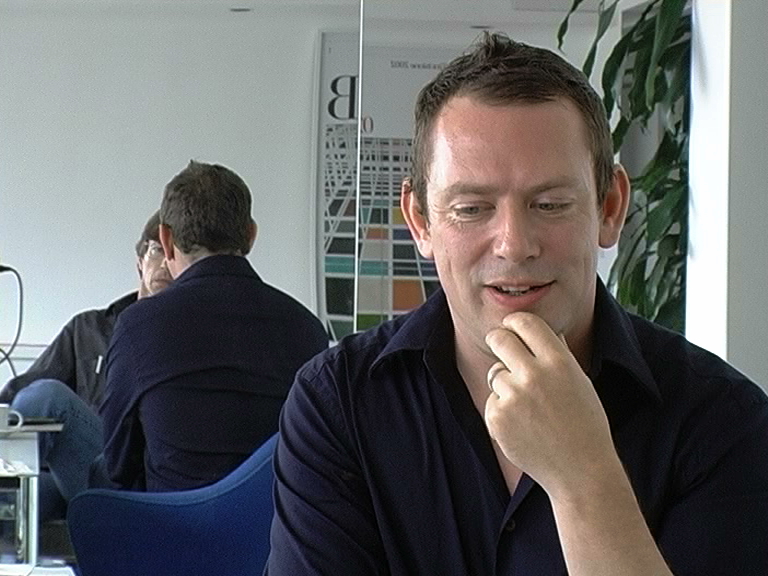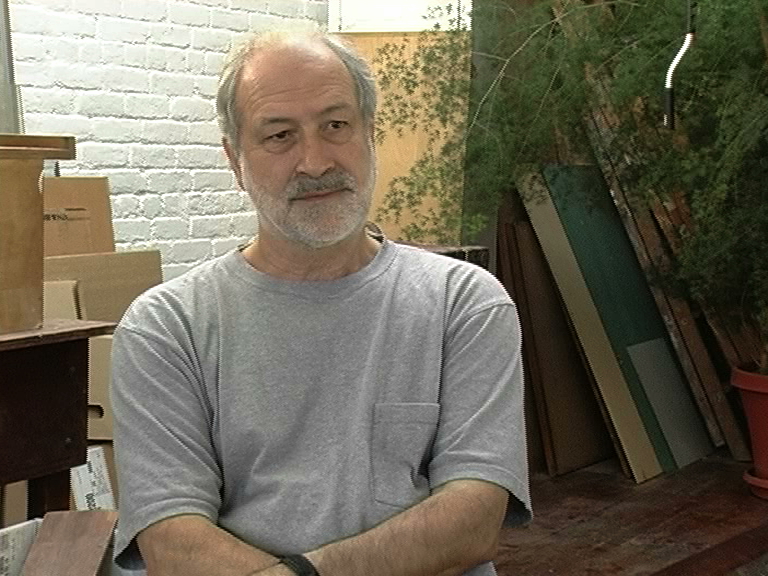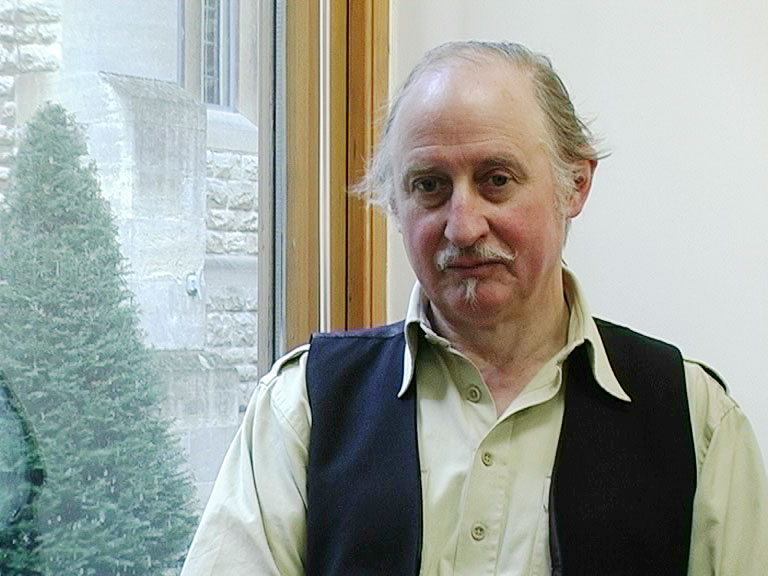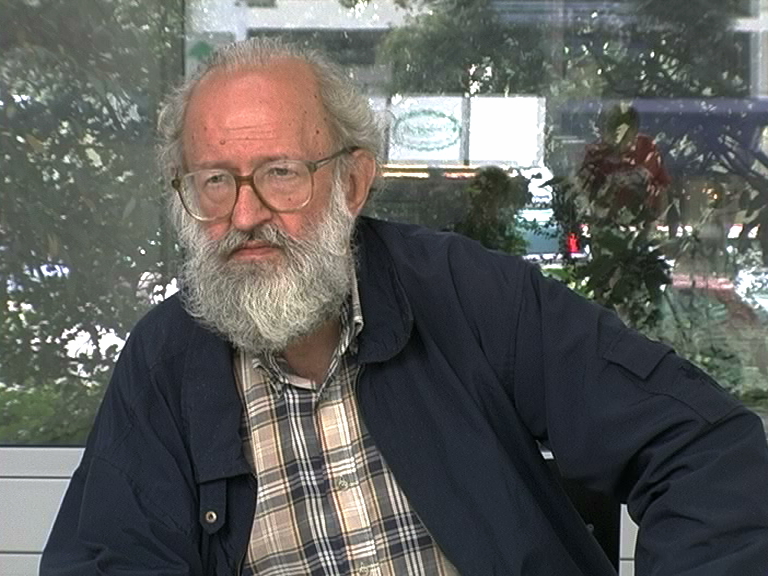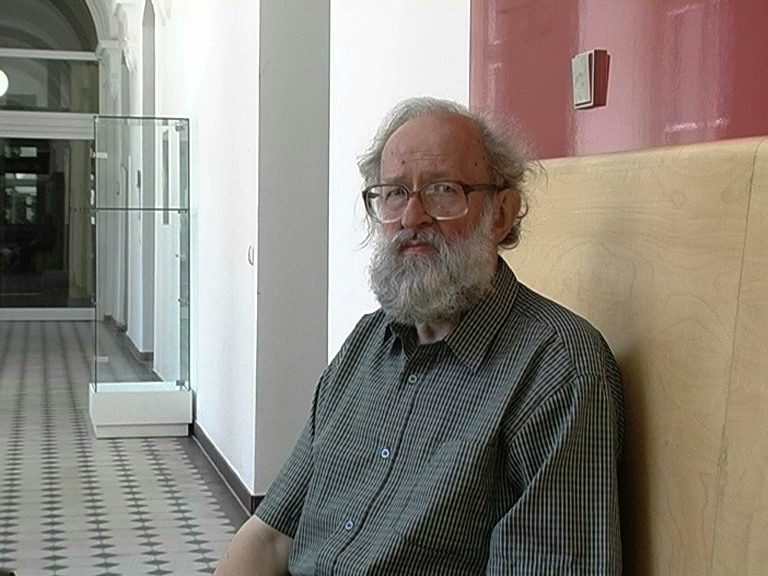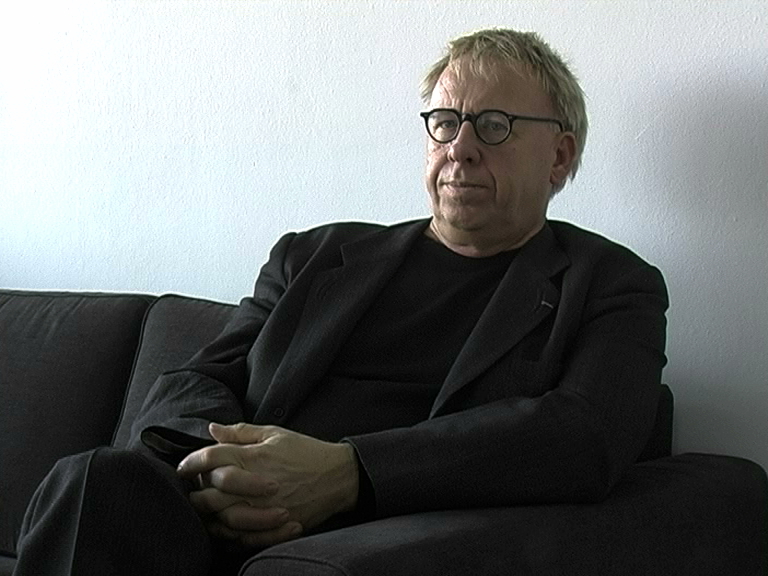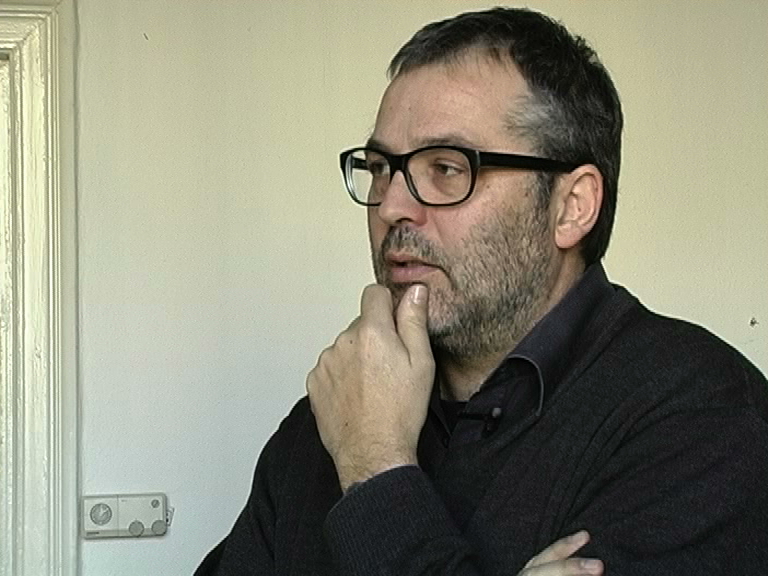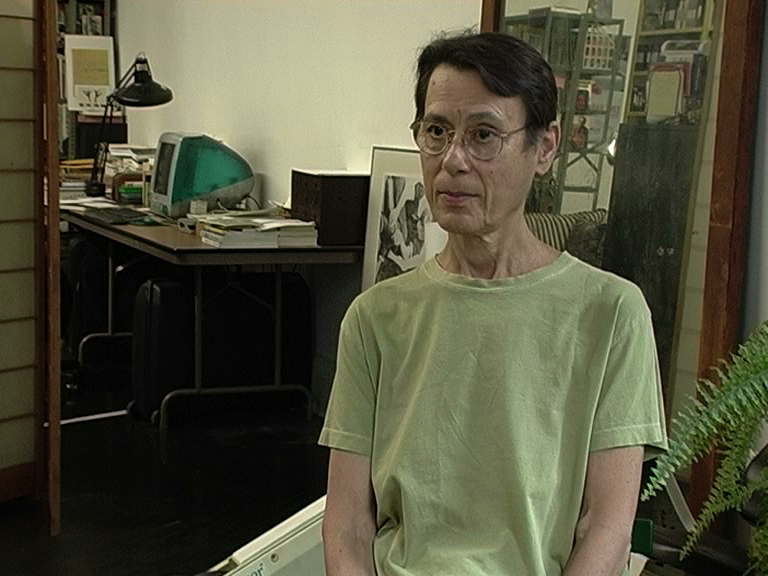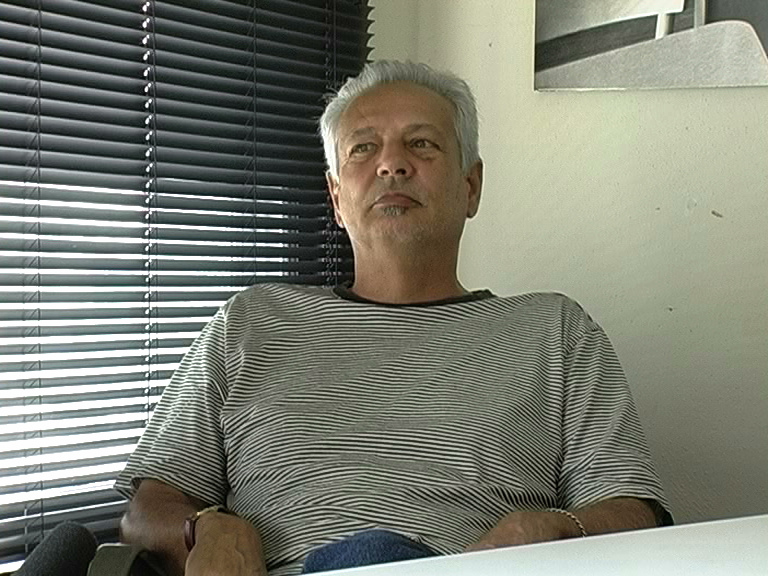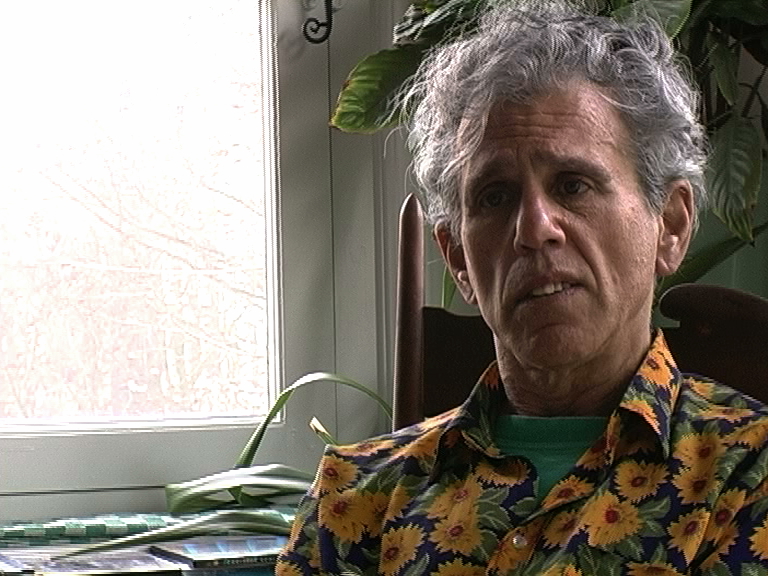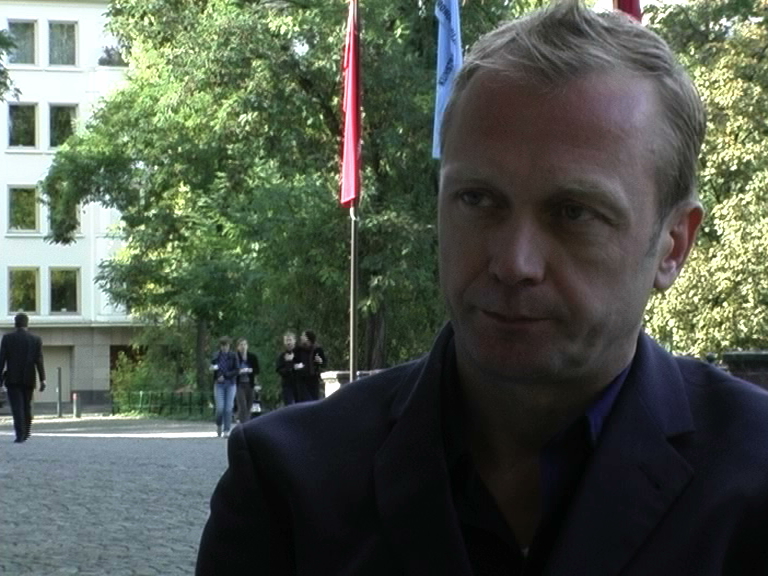S.R.: The terms of influence or terms like originality, faked originality of conceptual art. And especially in your case in relation to popular and pop culture. Can one say that you were starting with three terms: documentary, discoursive relations and a kind of sampling? Do you see it like that?
D.G.: No, I think the sampling was in a later work, “Rock my Religion”. The most important term for me was information, and humor. For me Conceptual art is anarchistic humour, not new academicism like Kosuth or Art & Language. A good example would be Ed Ruscha, Stanley Brouwn, On Kawara. The idea was to make something that was listen and read – beginning with my magazine pages, a “sign that was disposable”. And we destroyed the idea of value. It seemed to make everything very dumb but very intelligent at the same time, there was a kind of deadpan humor, which you could also find in Samuel Beckett, early Godard. That was middle-60s. And Sol Lewitt – who I showed when I had a gallery – said that his wood-lattice pieces were to be playgrounds for his cats.
S.R.: Can one say that you have one very strong influence? Can you name it?
D.G.: Two influences. Dan Flavin and Roy Lichtenstein. In both cases humor was very important. But also the idea of… Lichtenstein wanted to destroy painting by taking printed matter cliches and by putting them to paintings. Instead painting became more valuable. So what I wanted to do is to take a printed matter, instead of putting it in the gallery, put it back in printed matter, in magazine form, where it would be disposable, have no value and could be instantaneously understood in terms of surrounding information and surrounding magazine pages. Also Flavin said he wanted to destroy value by taking lightbulbs from the hardware store, and then after the show is over, they go back to the hardware store. He also became very involved in his work having value. So on the way these artists who were Lichtenstein in dealing with printed matter and magazines was a very big influence, and Flavin was able to coalesce two things that were totally irreconcilable: Tatlin and Speer, and then later Barnett Newman, Caspar David Friedrich, Russian icons. So, the idea was to reduce very complicated things into something very simple and schematic.
S.R.: I see. You said a lot of names. What do you think? Is it possible to figure out one aim in your practice, one goal?
D.G.: Intersubjectivity. Not always the perceptual process of two people looking at each other as they look at each other, so they can see their own perception and also how they are perceived by other people perceiving them. Probably it`s because when I was 14 years old, I read Jean Paul Sartre’s “Being and Nothingness,” and this – I think it influenced Lacan a little bit. I think it comes from Hegel originally, the idea of the two people, that we form our ego by being seen by somebody else who we’re seen who is seeing us and vice versa. I think this concept of Sartre had a really big influence on my work. And the work often tends to be a philosophical, or psychological model.
S.R.: Right. You think that the process of reception that is involved in your works, in your installations – that’s the main aim or the main goal? That you cannot say there`s something like a pre-figured content?
D.G.: With the pavilions there is also landscape like Caspar David Friedrich or Mies van der Rohe. And everything is one thing because there are shifting historical and site-specific influences. I think one thing is important: It`s that my work is not about the gallery cube, but about the city plan. “Homes for America” was about the suburban city plan, and the Dia Foundation piece is also about the grid of New York City as against the 360 degree sky and the shapes of people’s bodies in 360 degrees, in the visual field. But I think city plans have always been important.
S.R.: Sea plans?
D.G.: City plans. The plan of the city.
S.R.: Do you think, by the way, do you think that the conceptual paradigms are still in function?
D.G.: I don’t think there is any such thing as Conceptual art, but I think the influences of Pop art and popular culture are still very important. I guess I admire one artist who is a bit younger than me who is 53 years old – Rodney Graham, and you can see many influences, but also the popular influence is important. For me when I was conceiving my conceptual pieces, simple rock songs, particularly by The Kinks, were very important.
S.R.: Especially in the film “Rock my religion”?
D.G.: Well, before that I was really influenced by the Kinks. I think side effects, drugs are coming from a song by the Rolling Stones: “Mother’s Little Helper”. So I like short forms that can be assimilated to pop music or pop culture. But also to have philosophical models and relate architecturally to the city and often landscape or city buildings. Maybe more recently I’m becoming influenced by impressionism, because my work in parks is for people lying down inside or outside the pavilion, and also parents with their children, as photo opportunities during the weekends. The first piece in Münster was like that, in the sculpture show.
S.R.: Is there a difference between popular culture and pop culture?
D.G.: No.
S.R.: For you it’s the same?
D.G.: I’m an Anti-Adornoite, I hate Adorno. I`m very close to Walter Benjamin, a little bit of Marcuse, particularly his idea of polymorphous perverse sexuality. I’m very anti-Adorno; Adorno hated America. There’s many things I hate about America, but I think the popular culture of America is important for my work.
S.R.: Yes I think one can say that there`s a difference between popular culture and pop culture in Europe. Maybe the difference is not so strongly conceivable in the United States. Maybe that is the very interesting point in your work, for us, to have retrospect view on these works from the early 60s, from now up and then on. What was it exactly, you said, Conceptual art is nothing?
D.G.: No, I said, the academic idea of Conceptual art, that should be about art as philosophy or about some kind of academic idea of philosophical discourse, to me is nonsense. Conceptual art was an idea of making art that seemed to be stupid, but actually was very smart, that was about deadpan humor, maybe very anarchistic because it was trying to destroy the idea of value. Stanley Brouwn would be a good example. Or you can put in Fluxus as well as conceptual art. Just to show the boundaries of conceptual art are ridiculous. I also… There is a new book out on conceptual art by Phaidon. The cover is On Kawara, and it has some of the very important people who people normally didn’t think of as conceptual artists, like Lygia Clarke, Hélio Oiticica in Brazil in the 60s. You can put an enormous amount of art from different periods, including Gutai in the early 60s in Japan as conceptual art, not make a rigid statement around these people, Seth Siegelaub. And I particularly have a problem with Kosuth, because he was a student until like 1968. He used to follow me around, he pre-dated all his works, he followed me to see On Kawara’s place. Basically there’s a lot of people who try to make a mystique of conceptual art. I think a lot of conceptual art was about destroying the idea of value in the gallery system. But then, as Jeff Wall pointed out in Dan Graham‘s “Kammerspiel”, it was a utopian fantasy destroying value, destroying the gallery system. Of course Jeff has gone too much into the other direction, towards enhancing the gallery system and the museum system. But I think it’s naive to think you can destroy galleries or museums. One area that my work went into was to take advantage of museums as social meeting spaces. Lobbies are important for romantic meeting places, book shops, gift shops, maybe the elevators. Certainly the idea of romantic meeting place is very important. I did a work called “Heart Pavillion” for the lobby of the Carnegie International, the Carnegie Art Institute in Pittsburgh.
S.R.: Do you think there is a possibility to renew this philosophical approach in contemporary art? Not saying Conceptual art, contemporary art, let`s say. Is there a new aim to bring philosophy into art, or do you think everything that is critical in terms of philosophy in this time must be a special reception and have a reflection of the early conceptual art?
D.G.: No, I think I have a problem with neo-conceptualism as practiced by Christian Nagel Gallery in Munich and in Cologne, it’s totally academic. Also I have a very big problem with the 1960s neo-design, people like Jorge Pardo and Rehberger, because I think what they do is that they have a fantasy of what the 60s were about, and they are trying to be anti-80s and 90s with this kind of fantasy of design. In many cases they appropriate without thinking of the function. For example Andrea Zittel takes directly from books about Joe Colombo. It`s exactly the same thing, just going through old books. Walter Benjamin said, what happens with the new, the new is usually neo-something and it’s against the just-past. I think the artists I like, are artists who deal with the just-past. For example Paul McCarthy has done a re-do of Jeff Koons’s “Michael Jackson with bubbles”, the chimp. I think what Paul is doing, also the sculptures… – One is black, one is golden and one is silver and a little bit bigger than normal. He is re-doing the just-past. But also in the 80s, there was the idea, like Sherrie Levine, of appropriating things that were high, that were considered to be art. So I think a work that comments on the just-past, as the Dia Art Foundation did, bringing in the 70s and 80s pavilions or more important was always to deal with things. I like Rodney Graham’s work because it deals with a fairly close historical past. He had one idea: to have a film, it would be about Morris Louis painting a painting in his livingroom in a suburban house outside of Washington, and Clement Greenberg comes by to look at it. It’s about the beginning of suburbia. I don’t think he is going to do it, but that approach is … if you want to call it philosophical, I would call it philosophical. I think ideas of history are very important, and early Conceptual art was about the instantaneous now (snaps his fingers). But after that period art got more involved in historical allusions.
S.R.: So, what you called… We call it „surface Conceptual art“, because you have only surface, not the philosophical meaning behind that. That could give us a reason to renew something like the aim of this philosophical art or reflective art. But anyway, the interesting thing is that, as you pointed it out, the main sources for you were popular culture, pop culture. For this new generations of so-called Conceptual art the sources are the Conceptual art books.
D.G.: Other sources were mathematical topology. I think younger architects were interested in Friederich Kiesler. Kiesler was very important, also Oiticica. A lot of my conceptual pieces, like the video “Past features put attention” were very involved in the idea of a topological [?] and about ideas of time, recent time, like a short time-delay or a more historical time. We were interested in everything. Nauman liked to go to lectures by Richard Feynman, a great physicist who gave lectures and also played the bongo drums. I think in the 60s we were interested in everything. What was good about art, the reason why we went into art – I wanted to be a writer – but the reason why we went into art is because in America you can be everything. If you are an artist, you can do film – Robert Morris did dance – you can do film, video, theatre, as well as objects. I think Nauman was a good example of a 60s-artist, whereas classic conceptual art seems to be too rigid and too dogmatic and programmatic.
S.R.: Stressing a little bit the term of influence, you already gave some examples of influences and sources of your art. I always had one question in my mind. Did you know Adrian Piper in the early years? Was there a kind of communication?
D.G.: No. She had an apartment above Sol Lewitt’s, and I knew her as a young artist. The people I was involved with in the early 70s were Mary Kelly after „Post-Partum Document“. I got her involved in some shows in Europe and also I gave Martha Rosler her first teaching job in the Nova Scotia College of Art. I didn’t know that much about Adrian Piper.
S.R.: I just thought because…
D.G.: I knew her, but I was not involved in her work or supporting her.
S.R.: Yes, I mean if you want to say something… – These were the main questions from my side.
D.G.: Ok.




